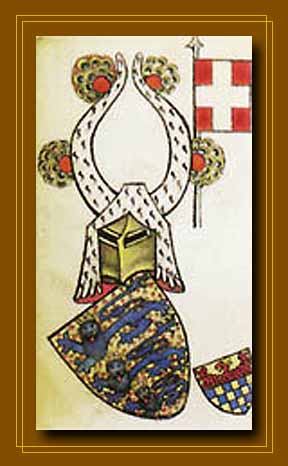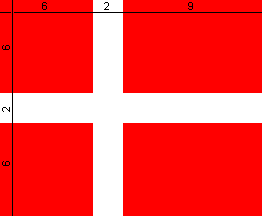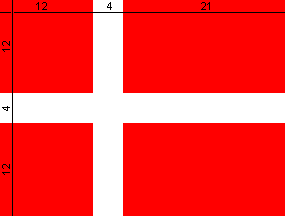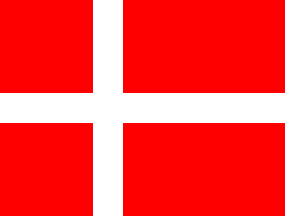

NOTE: The background of this webpage is the front page of Christiern Pedersen's Danorum Regum heroumque Historia , Paris 1514 (see Gesta Danorum). Found in the book "Apoteker Sibbernsens Saxobog", C. A. Reitzels Forlag, Copenhagen, 1927. |
On the evening before the Battle of Lyndanisse, the Danish King Valdemar II claimed to have a vision of a white crucifix in a darkening sky. This he interpreted as Gods wish that he triumph in battle the next day in what turned out to be a very bloody victory.
|



The Danish flag is called "Dannebrog", [which is] old Danish for 'The Danish Cloth' or 'banner of the Danes' or 'red banner'. The flag occurs first in a Danish text 1478 and in a Dutch text 100 years before; in the Dutch armorial Gelre (1370-86) a red banner with a white cross is seen next to the arms of Valdemar 4. 'Atterdag'. The Dannebrog has two different red shades; approximated as Pantone 185c (for "land" use) and 195c (for naval use). |







